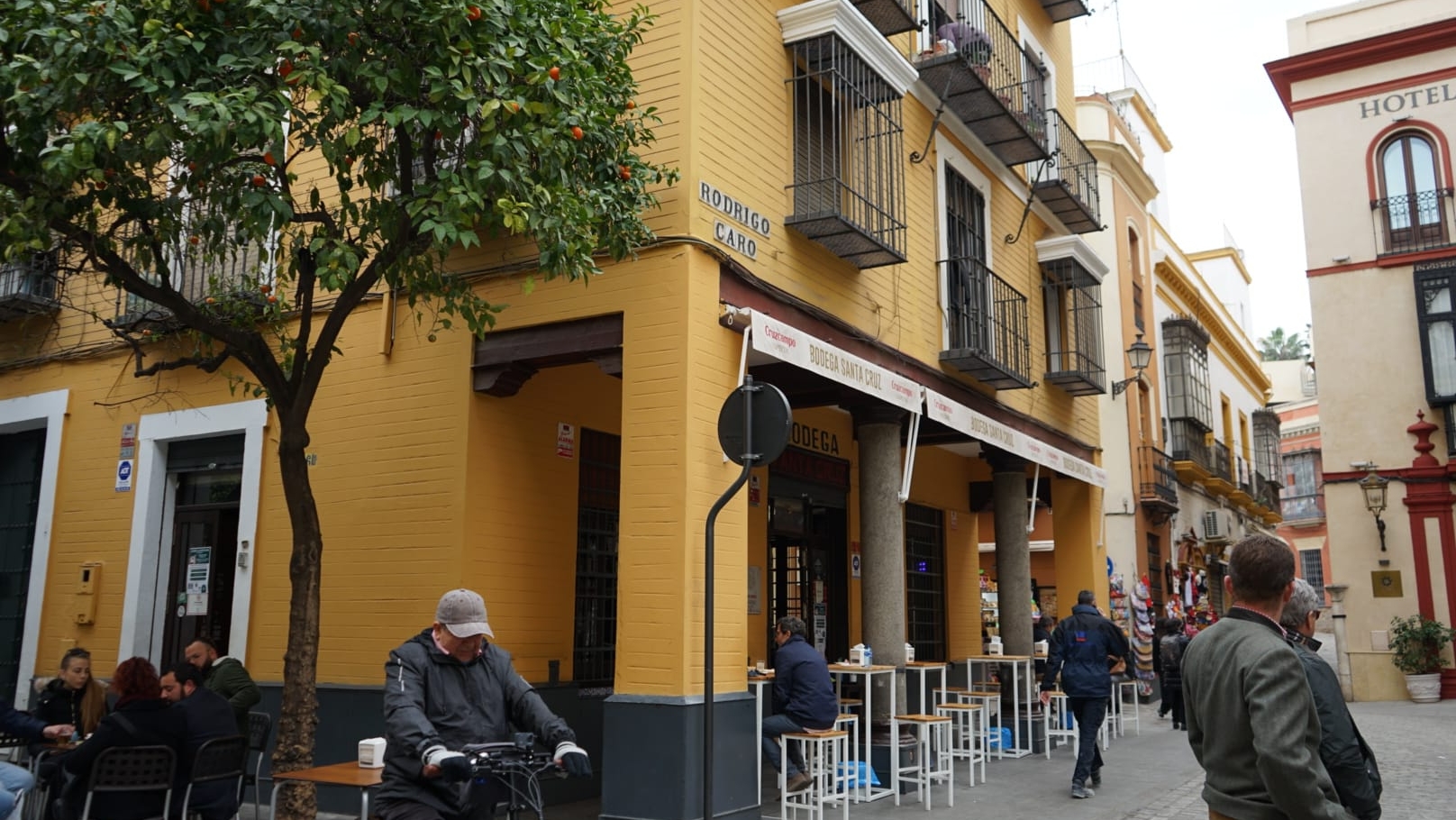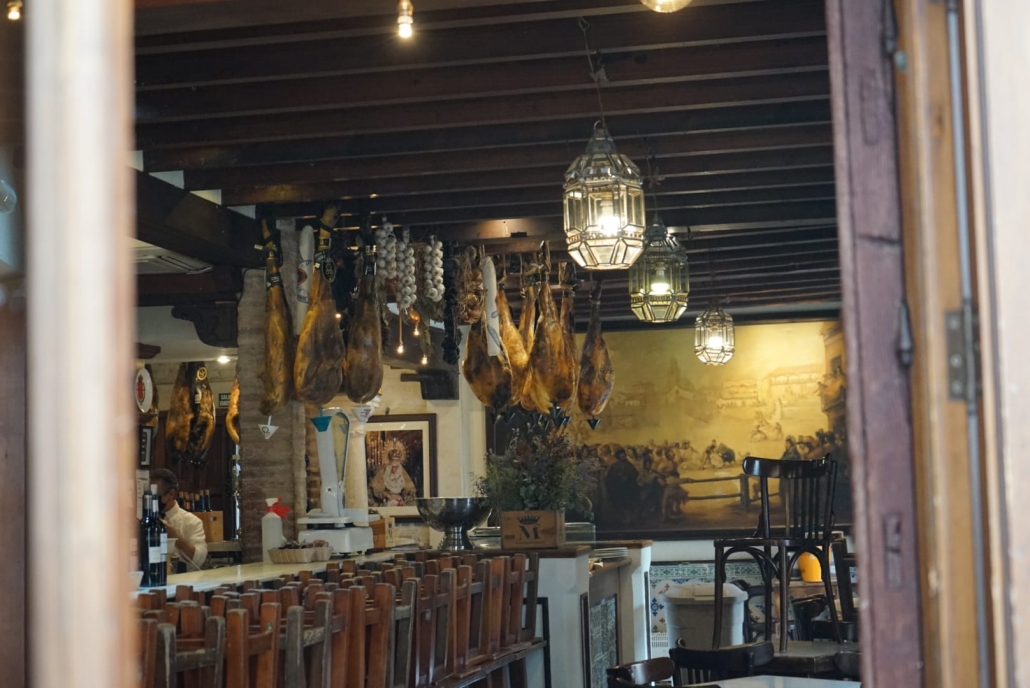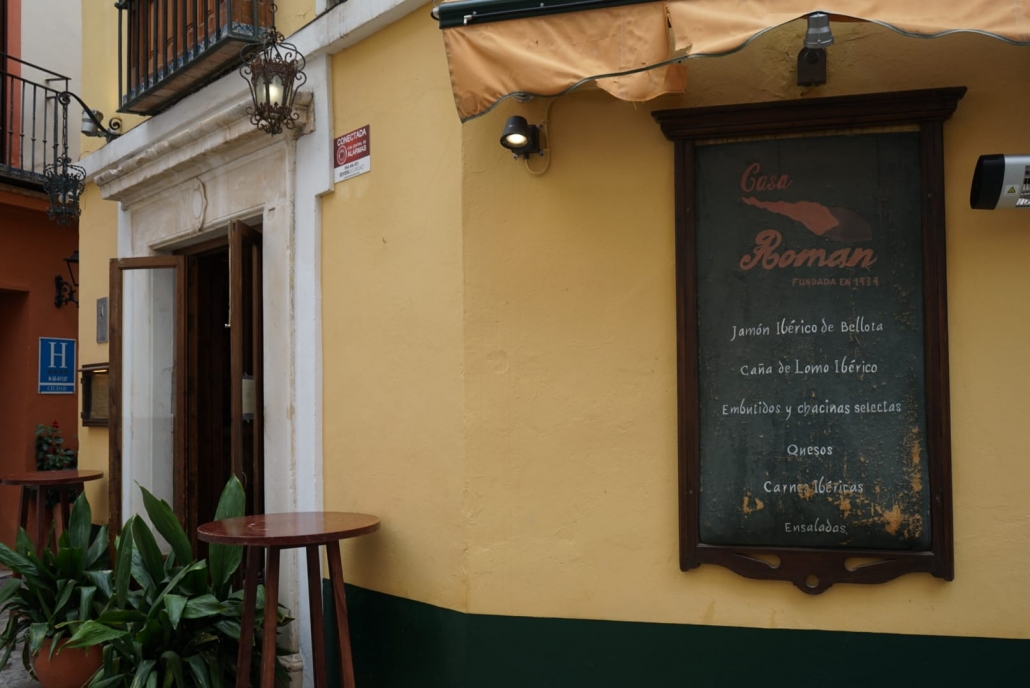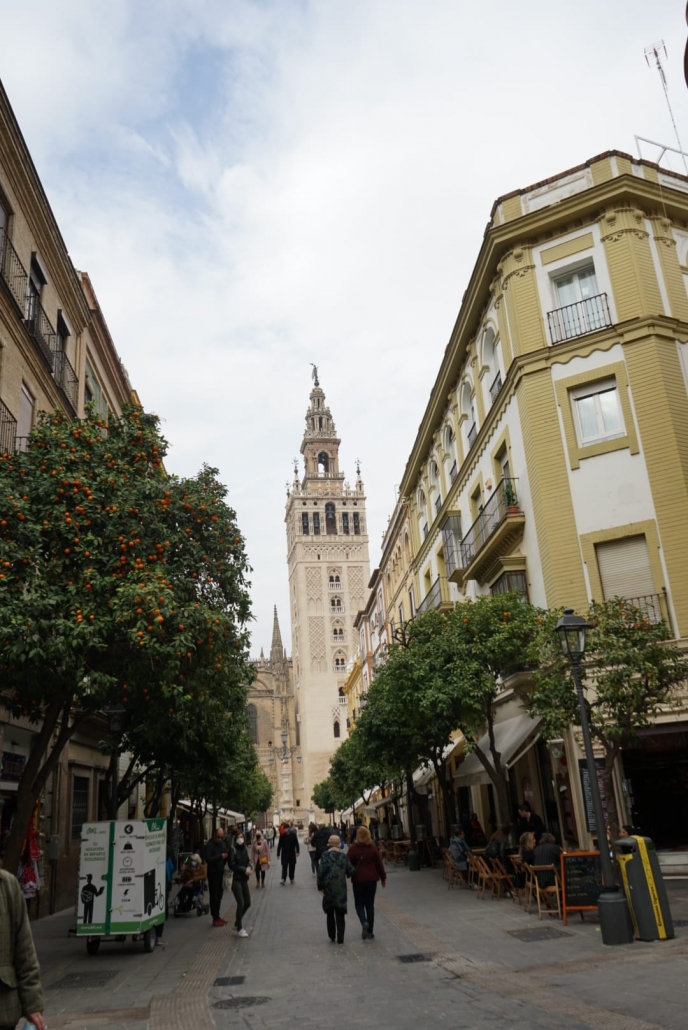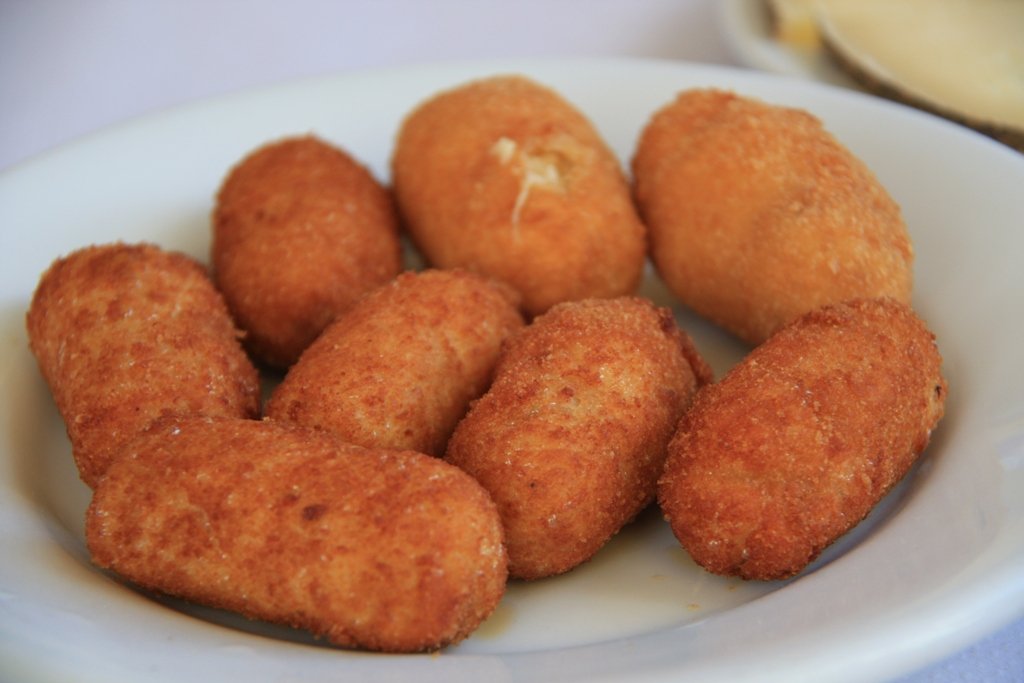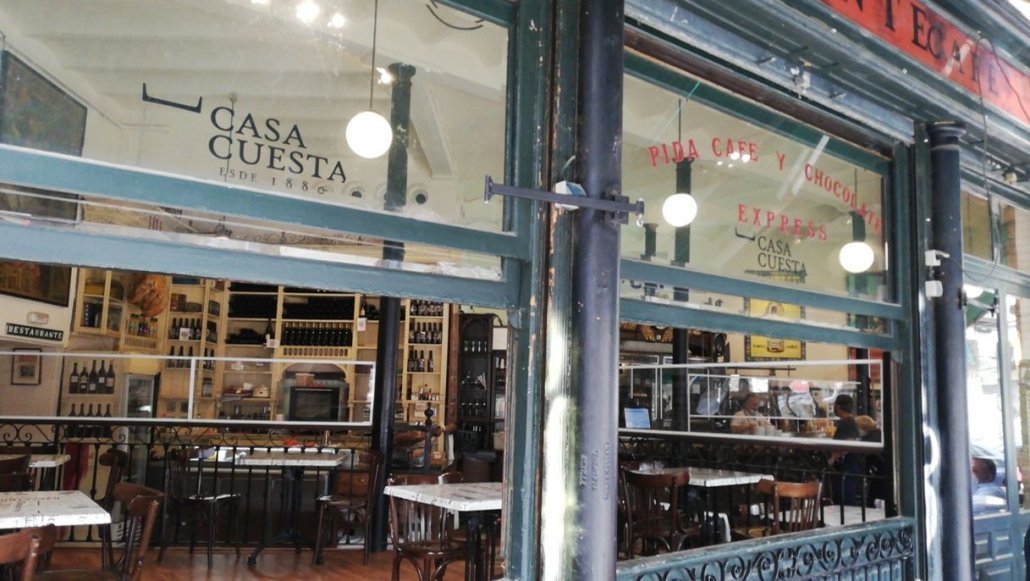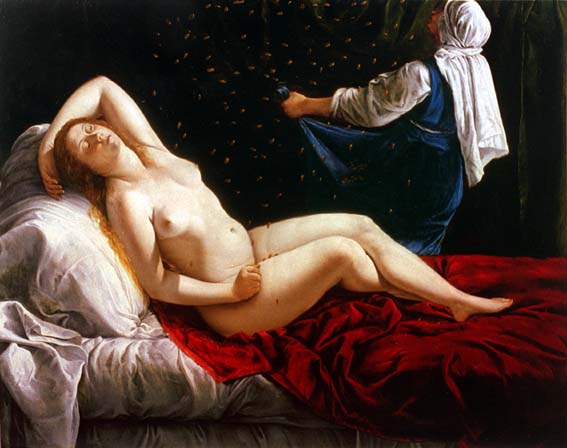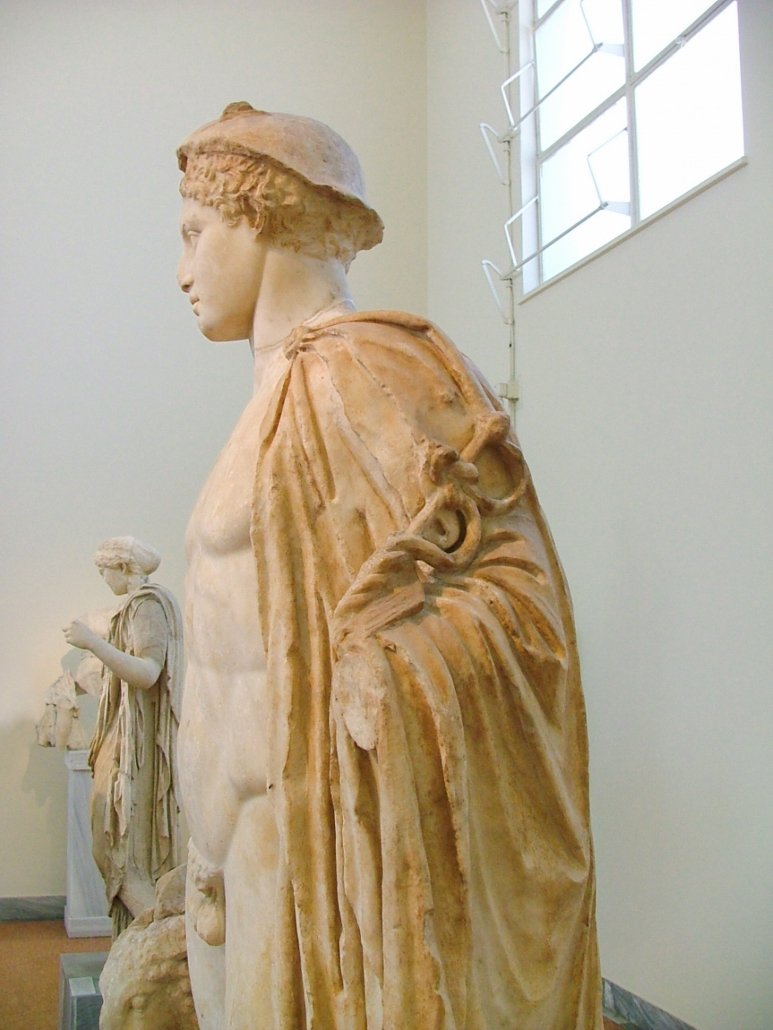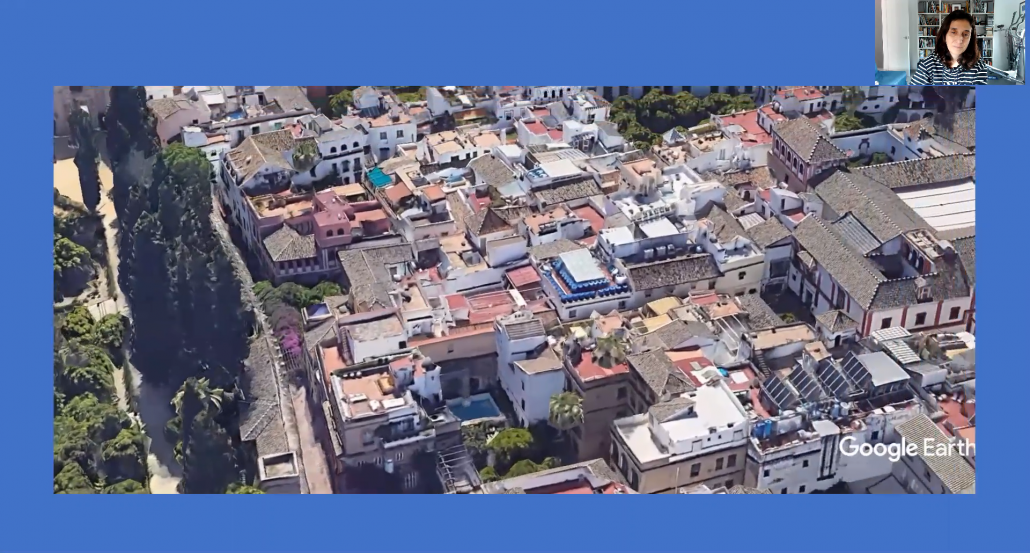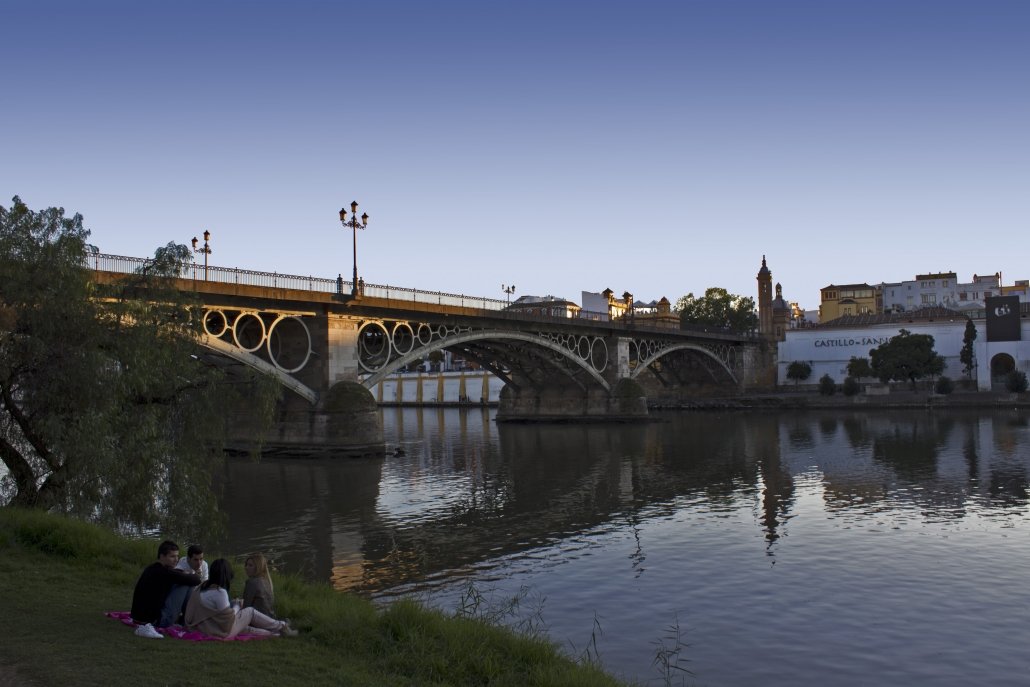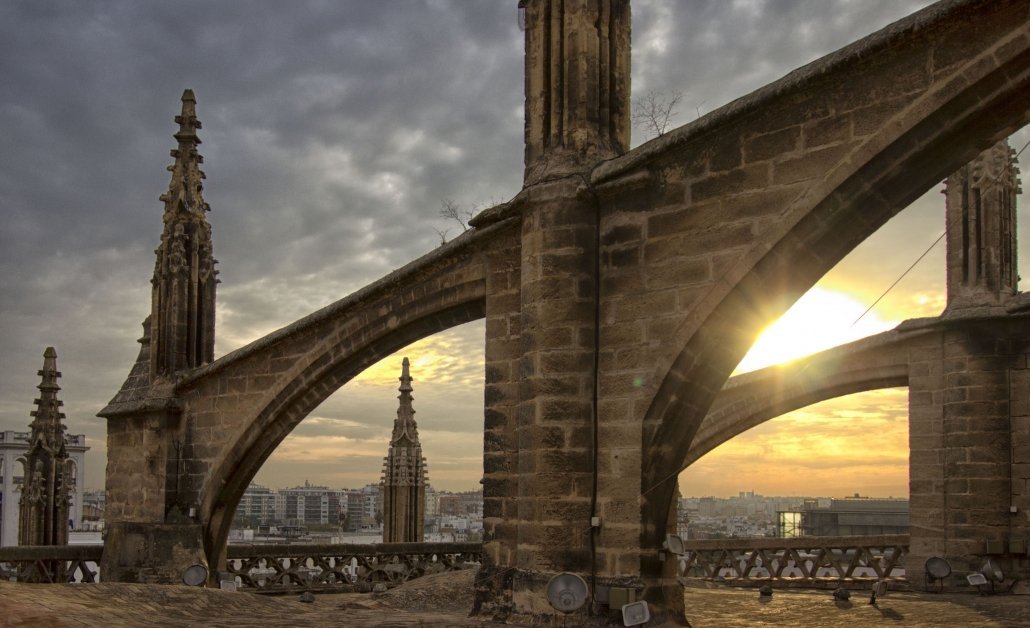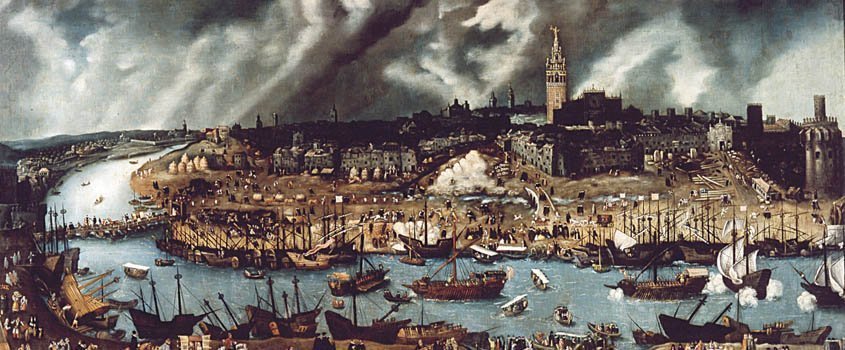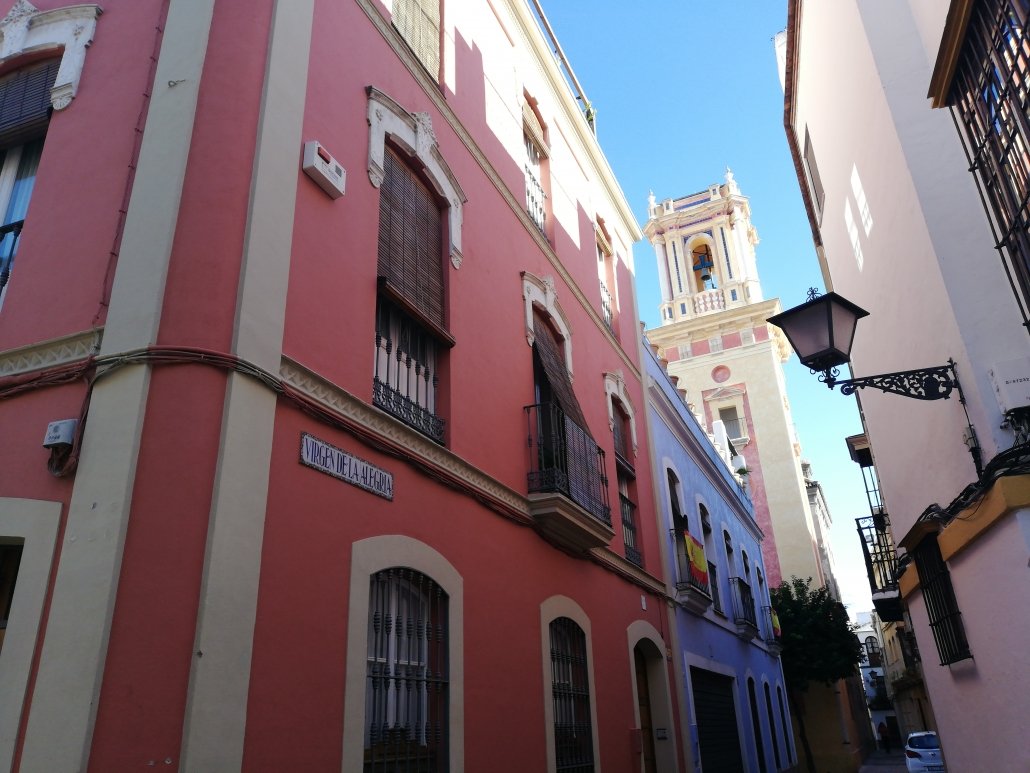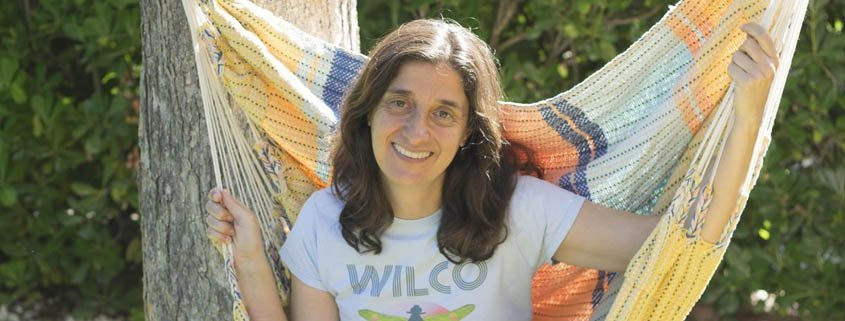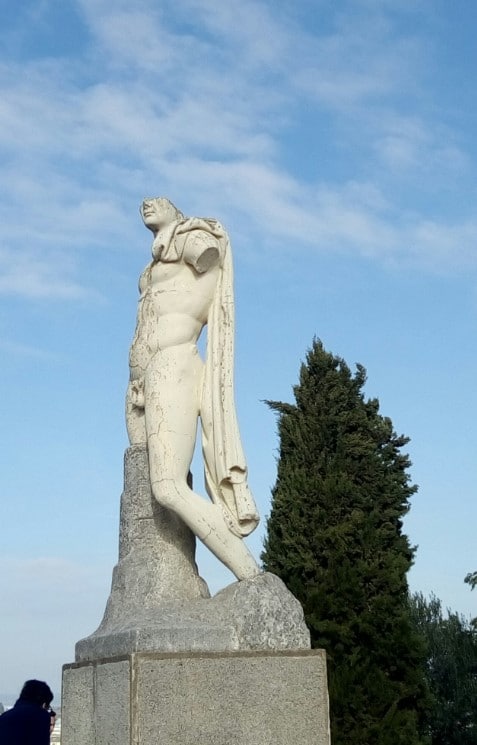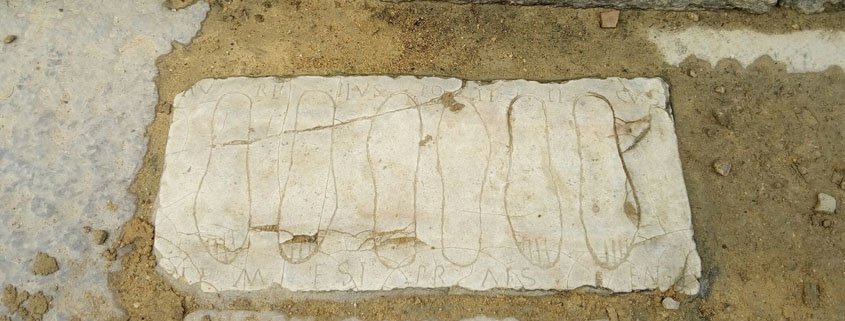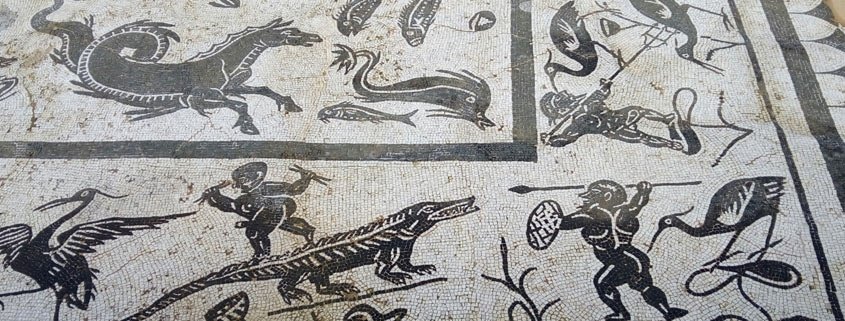There are many traditional bars in Seville and most of them are in the historic center and in the traditional neighborhood of Triana. Today we present a selection of 6 of our favorite places to have a tapa and a drink while you enjoy your stay in the city.
But first we have to explain what a tapa is and what is the origin of the famous tradition.
Origin of tapas
A tapa in Spain is an appetizer that is served in most bars or restaurants with a drink. They were originated in the south of Spain, although their versatility and popularity have spread throughout the country. They can be tried in the best classic bars in Seville. But let’s go to the origins.
Apparently, the word tapa comes from the custom of “covering” (tapar) the glass of wine with a slice of ham or cheese to keep out the flies that were so common in the warm weather in the south. This ham or cheese was served as an aperitif accompanying the drink. Later it evolved and the tapa (always small in size) could be something cold such as salad or seasoned potatoes, pepper salad or tomato with tuna. Or hot, a small portion of a stew, a small sandwich or a tasty rice.
The tapa is linked to the custom of socializing and traditionally it is eaten standing up to make it faster or more dynamic and a route of several bars is made where you can try the different specialties. This is what has given rise to the verb “tapear” or “go for tapas”.
Let’s now see where we can have tapas in Seville. We’ll talk another day about innovative bars and modern cuisine, but these are some of my favorite traditional bars that won’t disappoint you.
1. El Rinconcillo (The Little Corner)
One of the famous classic bars in Seville and the oldest bar in our city. Behind the church of Santa Catalina is this traditional Sevillian enclave on a small corner. It would have been founded in 1672 as it says at its entrance, so this year will be the 350th anniversary of its foundation.
At the centenary bar, drinks are taken standing up, although there is an area of tables where you can eat more formally. In the Rinconcillo we can order a Sherry wine and a tapa of cod pavia, this consists of a crispy fried cod.
Although the origin of the dish is from Madrid, it has become very popular in Andalusia, especially in Lent where there is a tradition of not eating meat and fish dishes are prioritized, especially cod
2. Casa Roman
In the heart of the Santa Cruz neighborhood is the Plaza de los Venerables. It is presided over by the Hospital of the same name, an old hospice for priests in the 17th century. There, in this little square surrounded by souvenir shops and orange trees, we can enter Casa Roman to have an exquisite “jamon” ham tapa. Or better yet a portion, that is, a dish to share. Although the tapas are individual, sometimes they are small when we talk about delicatessen such as Iberian ham. In that case, a more generous portion will lift our spirits more.
The hams hanging from the ceiling give the tavern an unmistakable image. Every so often they “open” one of those hams that will be consumed in tapas and portions by customers.
Iberian Ham (“jamon iberico”) is a typically Spanish product. The pig is Iberian breed, also called black pig, and is of great quality. Preferably fed by acorns and raised in freedom, the product becomes one of the most delicious that we can taste in Spain.
There are two classic places of origin and breeding of the Iberian pig, both in the west of Spain. One is Salamanca in the town of Guijuelo and the other is Huelva in the mountainous town of Jabugo. The latter is only 140 km from Seville, so it can be said that the Iberian ham is a neighbor and a great protagonist of our gastronomy that you can find in Casa Roman, one of the lovely classic bars in Seville.
3. Bodega Santa Cruz or Las Columnas
We do not leave the neighborhood of Santa Cruz to take a walk through one of the most charming places in Seville. It is the Bodega Santa Cruz on Mateos Gago street, better known as Las Columnas because of the two big columns at the entrance. A plus are the views of the Giralda, a few meters from the bar. Also, in a street that has been recently pedestrianized and has a nice atmosphere of bars and restaurants.
The interior of the bar is small, it has a bar where the waiters write down the amount of the drinks in chalk as was done in the past. A loud and crowded bar, yes, but with fast, friendly and impeccable service.
We suggest having a very cold Cruzcampo beer (the local brand of Seville), and a montadito. Montaditos are a small hot sandwich. There are many of them: tona with pepper, salmon and fresh cheese, whiskey sirloin. Perhaps the most popular and energetic is the montadito de pringá, a mixture of juicy meat, chorizo and bacon. Not recommended for low-calorie diets, but very very good.
4. Bar Casablanca
What is more Spanish than a “tortilla de patatas”(potato omelette)? Throughout the country we can find this simple but delicious dish. In Seville there is a variant that incorporates a sauce made with whiskey. The alcohol has evaporated, but there remains a taste that goes perfectly with the potato and egg.
One of the best places to order this original tapa is Bodega Casablanca. It is located a few steps from the Cathedral and the Archivo de Indias, next to the Avenida de la Constitución. Just opposite the recently restored Casa de la Moneda (the Mint), a historic building from the 16th century. The mixture of local gastronomy and historical places cannot be better.
5. Bodega Dos de Mayo.
Plaza de la Gavidia is one of the places most frequented by Sevillians. Away from the tourist streets of Santa Cruz is a square near the commercial area of Seville (Calle Sierpes or Plaza del Duque). In the center there is a statue of the Sevillian Daoiz who heroically participated in the War of Independence in the 19th century. Among the many bars in the square, it offers us delicacies in tapas such as artichokes with ham, octopus’ salad, super famous spinach with chickpeas, or cod and spinach croquettes.
6. Casa Cuesta in Triana.
We cross the Triana Bridge, we pass the Guadalquivir river and we are already in Triana, the old neighborhood of sailors, pottery and one of the places with the most personality in Seville. Just behind the lively market is San Jorge street and there is a beautiful bar that looks like it came from the 19th century with tiles, marble tables, a modernist-style wooden bar and posters on the walls of Toros and the April Fair.
We are in Casa Cuesta and it has a history of 135 years. On the terrace or inside we can have an exquisite salmorejo, recipe of Cordovan origin but integrated years ago into Sevillian gastronomy. This cold tomato cream similar to gazpacho is accompanied by pieces of ham and a hard-boiled egg.
A truly delight!
Before enjoying this part of the sevillian culture, hire our services to know the history and art of the city, as well as the real local life. We’ll give you more tips so you can have the best experience of Seville. Here is a link of an specific route to feel the local atmosphere https://www.toursevilla.com/tours/#insolita or https://www.toursevilla.com/tours/#autentica

